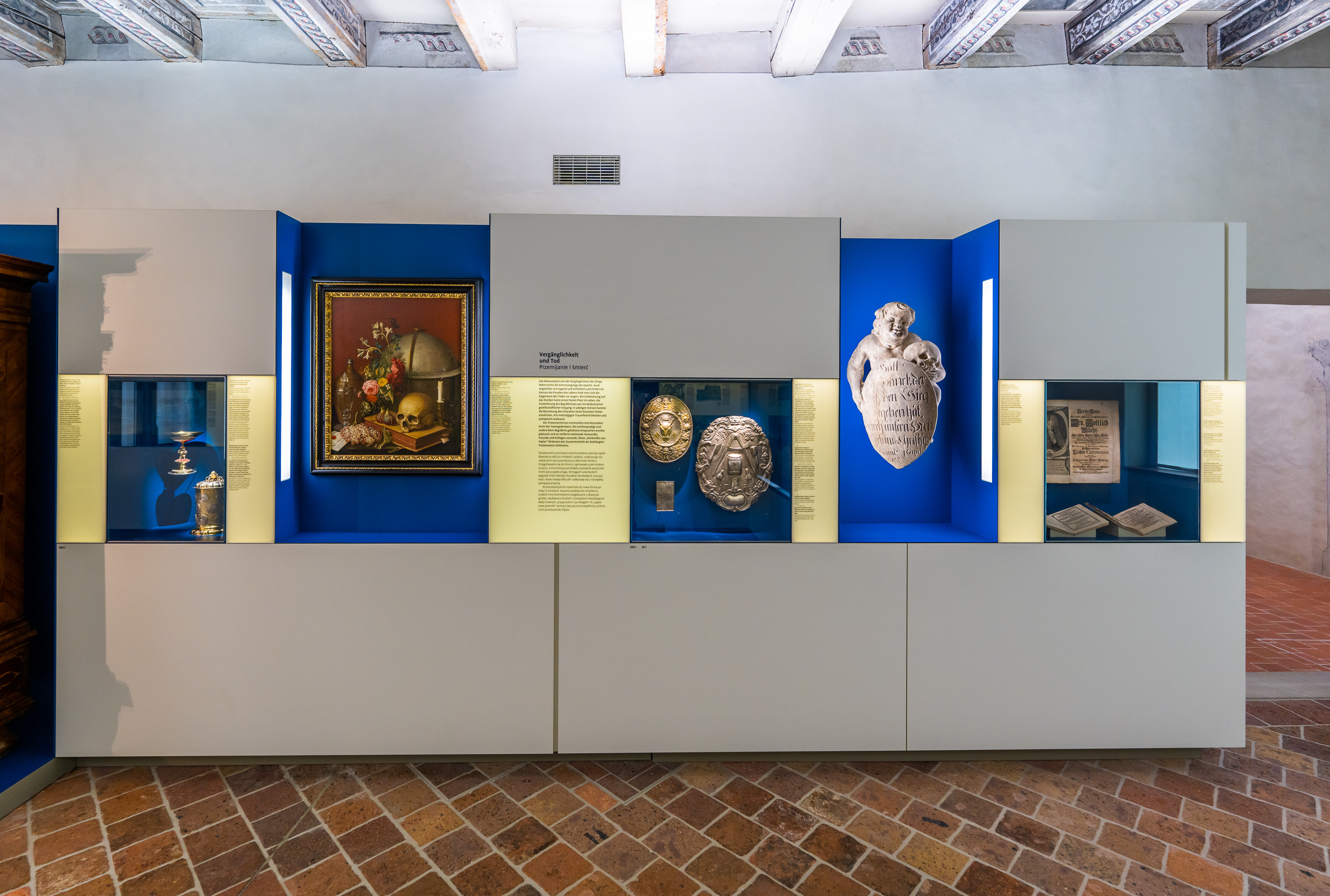
Vanitas still life
Gigapixel
Transience and hope
A skull, wilting flowers, a candle that has just been extinguished and a farewell letter - this painting from 1744 is characterised by symbols of transience. The admonition "Memento mori - remember death" is the theme. The Wrocław artist Philipp Sauerland (1677-1762) belonged to a movement of Silesian Baroque painting that was strongly orientated towards Dutch models.
Such vanitas still lifes first gained great popularity against the backdrop of the Thirty Years’ War. In view of the omnipresent lurking death caused by acts of war and epidemics, they were intended to visualise the vanity and nothingness of people’s earthly existence in a kind of devotional image.
The artist Philipp Sauerland, who immigrated from Gdansk to Wroclaw in 1716, painted his still life around 100 years later. The war between Frederick the Great and Maria Theresa for supremacy in Silesia had just been reignited after the country had barely recovered from the First Silesian War (1740-1742).
The theme was thus once again topical and the luxury depicted here was correspondingly full of symbolism: the blown-out candle symbolises the extinguishing of the light of life. The quickly wilting flowers and the delicious but overripe fruit also refer to transience. Man-made treasures such as the glass goblet in which the light is reflected do not last long either. The goblet is tarnished: “Happiness and glass, how easily they break”, as the old saying goes. Even erudition, indicated by books and telescopes, as well as man’s global striving for power are characterised by “nothing lasts forever”.
For the believing Christian, however, the picture also holds hope: The grapes are reminiscent of Jesus’ Last Supper. The butterfly symbolises the associated good news of the resurrection of the soul.
See similar attractions!
On a 2000 m2 exhibition space, visitors can explore approximately 1000 exhibits from the history of Silesian culture.
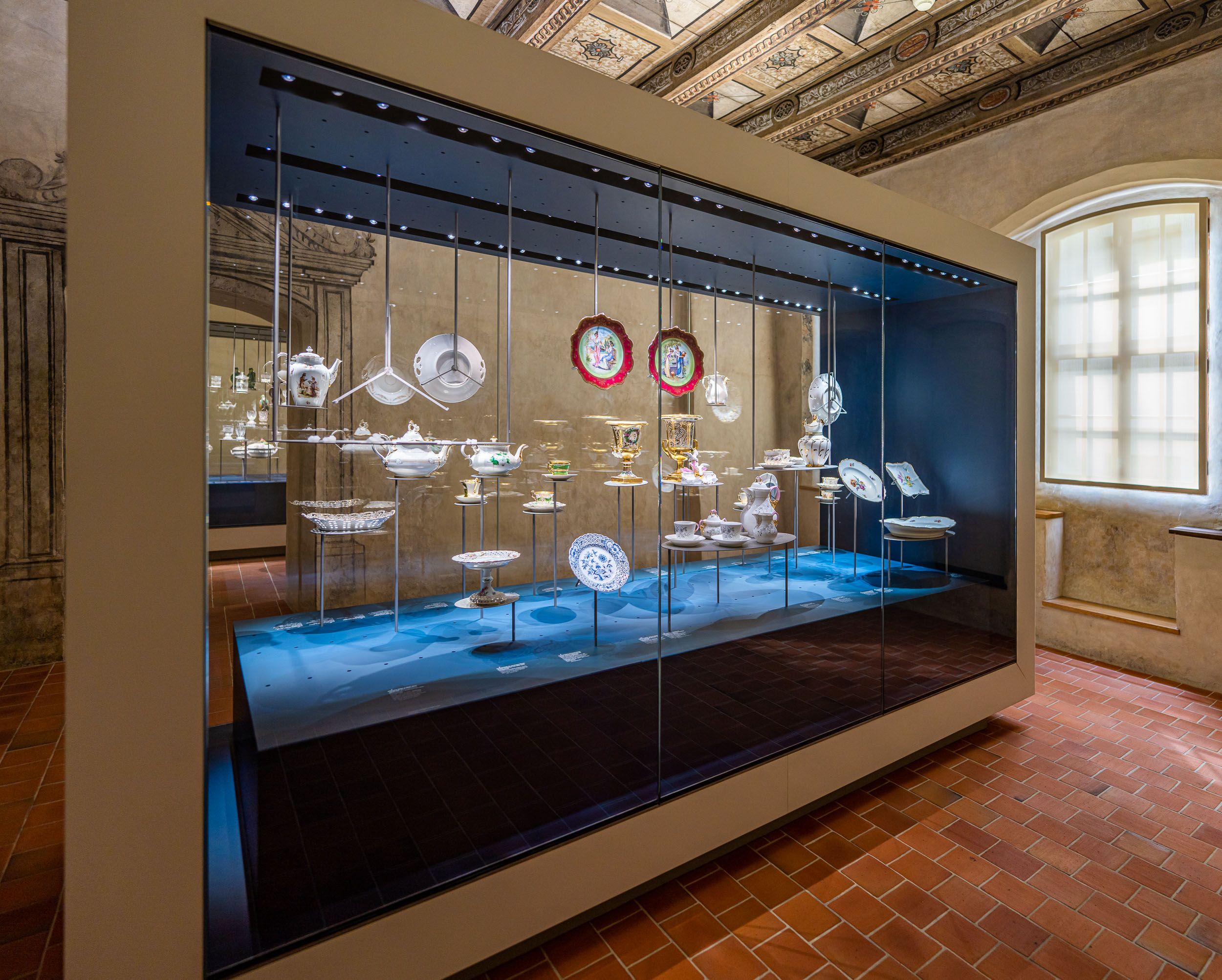)
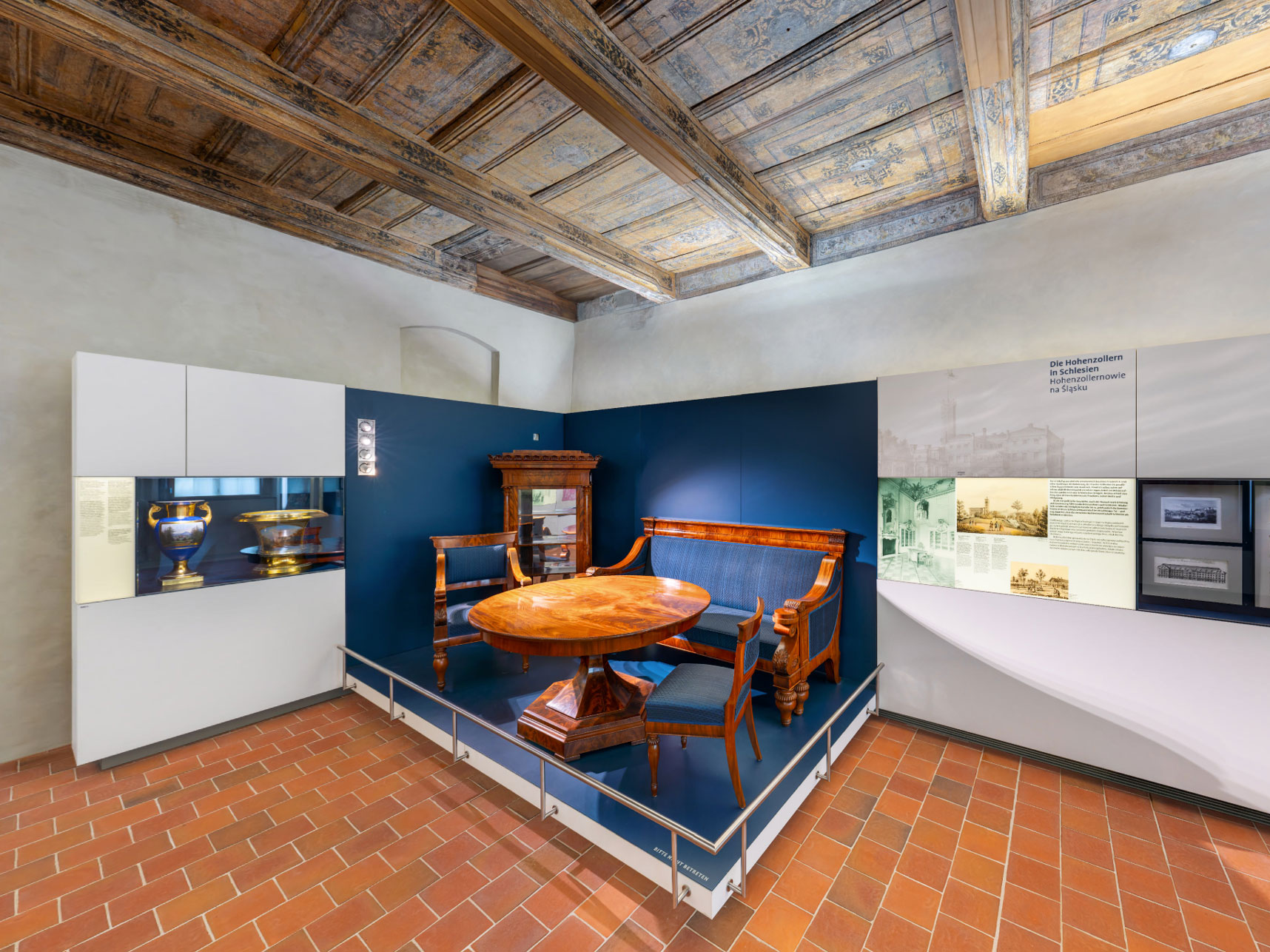)
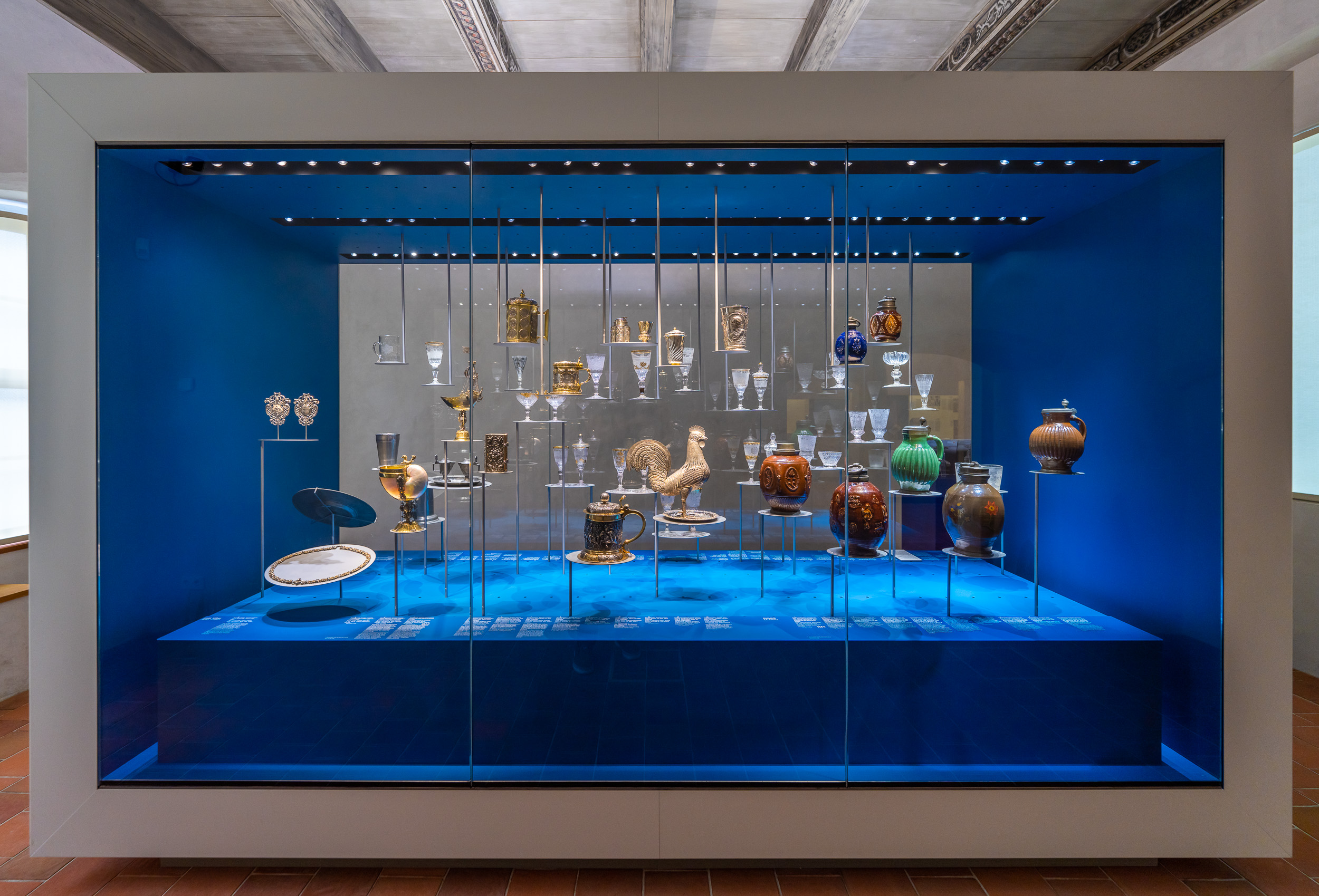)
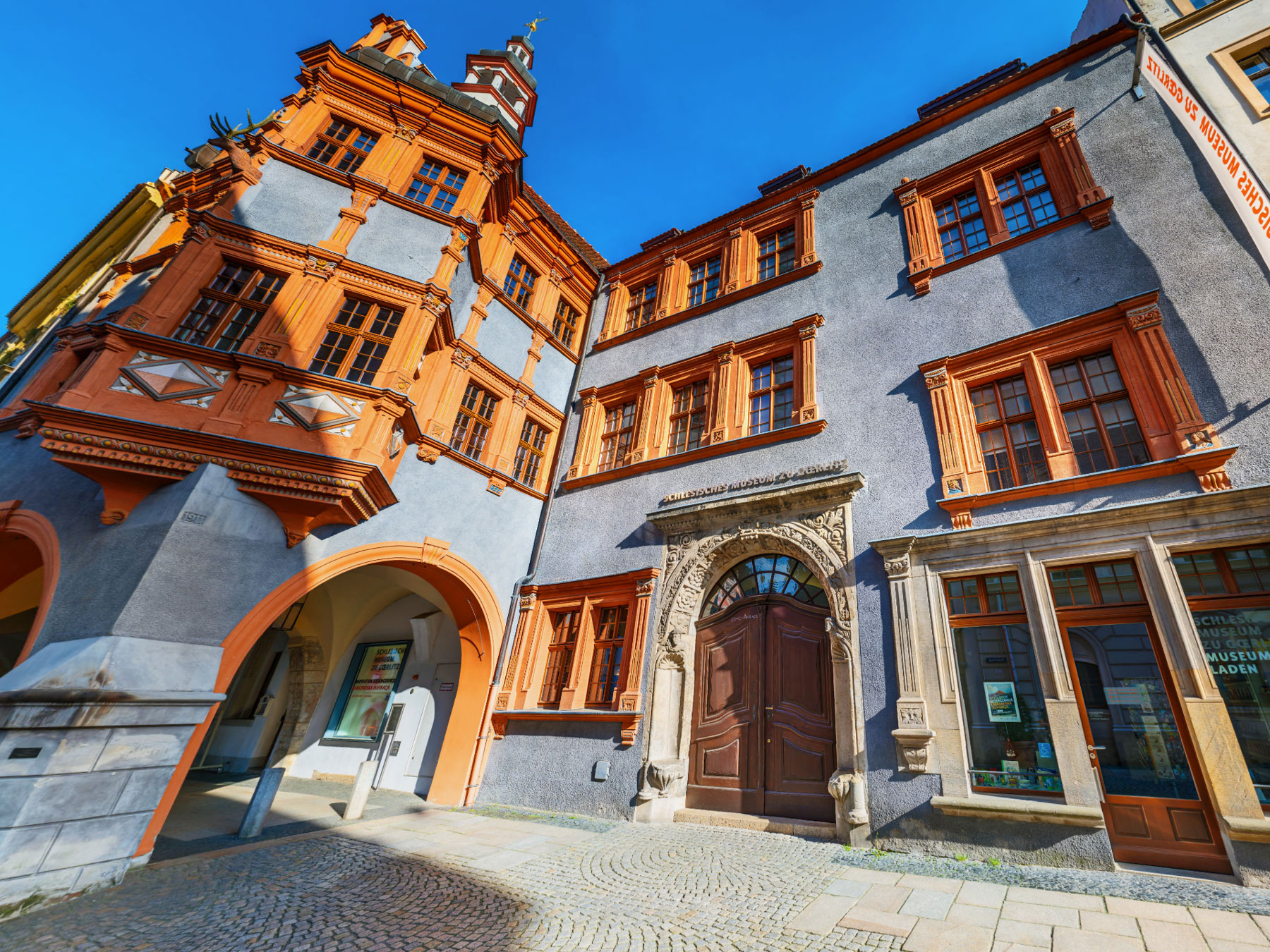)